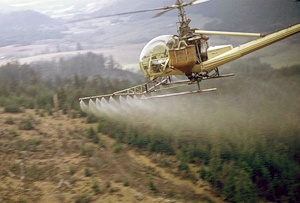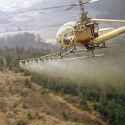
Accord Concentrate/ Rodeo • Accord XRT II • Arsenal AC • Atrazine 4L Drexel • Atrazine 4L Sipcam • Atrazine 4L Mana •Compadre • Forestry Garlon XRT • Garlon 4 Ultra • Grounded • In-Place • Metcel VMF • Polaris AC • Polaris AC Complete • Polaris SP • Point Blank • Riverdale 2,4-D L V-6 Ester • Sulfomet • Sulfomet XP • Sulfomet Extra • Sylgard 309 • Syltac • Transline • Velpar DF • Velpar L
This past April marked the 50th anniversary of the death of Rachel Carson. And while I certainly bemoan her absence and miss her Silent Spring voice, I mourn more for the fact that her life’s work and sacrifice on our behalf has apparently taught many of us little or nothing. Exhibit “A” in this thesis is the list of herbicides contained in a 2012 private forestry spraying application for a 3,416 acre unit near the Willapa Headwaters in southwestern Washington (thank you, Jon Gosch).
Rachel’s story is a powerful one and too often repeated. Here’s how it goes: A systems thinker (in her case a marine biologist) noticing trends and problems in the natural world compiles evidence that establishes correlative links between a chemical or chemicals and a natural or human health issue and then brings it to the public’s attention. These are not “proofs” in the traditional scientific sense but rather concrete rationales for further investigation—in short these are the building blocks of testable hypotheses.
But once these building blocks form and become known, a storm of industry-led criticism always follows. We know the pattern: Credentials and motivations are questioned; industry scientists rush in to defend the safety of products; new brochures addressing criticisms are prepared; and those offering the hypotheses are quickly and roughly kicked to curb for being un-American, job-killers, communists or worse. In all of this we have to really wonder where the sin lies in raising legitimate and justifiable concerns. And when exactly did poisoning our wildlife and future generations become an American value?
Visit www.cascwild.org/rachel-rachel-where-art-thou-the-need-for-a-noisy-spring/ to read the entire article.


